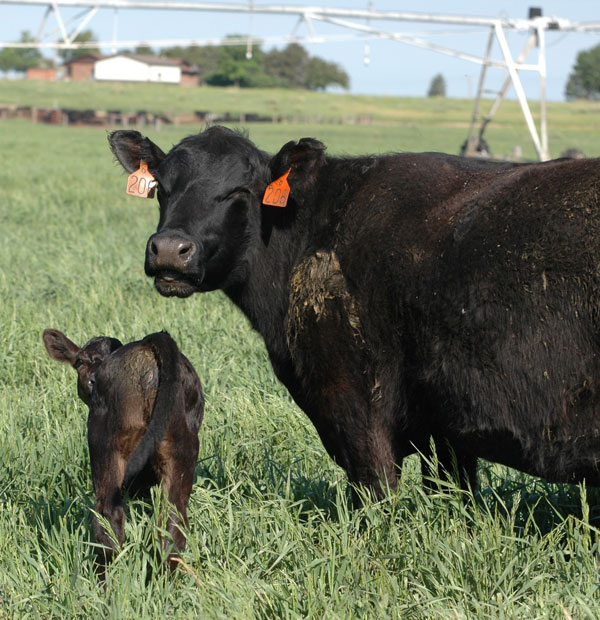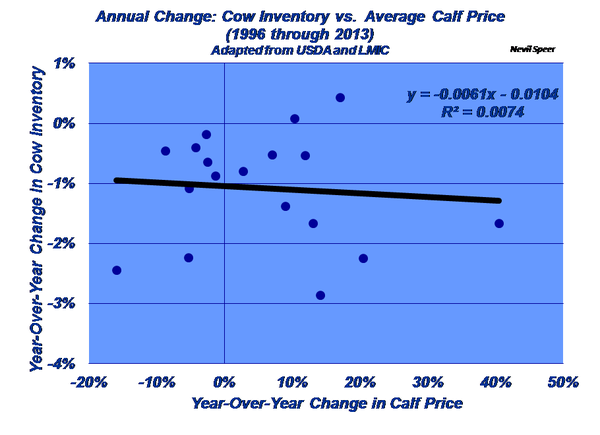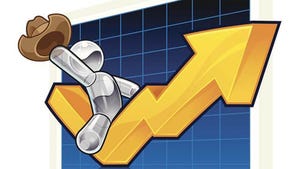Industry At A Glance: Changes In Beef Cow Inventory Vs. Changes In Calf Price
The concept of the cattle cycle has all but disappeared.
June 24, 2014

Will 2014 be a year of reversal in which cow-calf producers begin to rebuild their inventory? That’s an all-important question, and it’s seemingly been discussed more in recent weeks given the market’s strong counter-seasonal moves. The general thinking goes that with calf and yearling prices establishing new all-time highs and a favorable outlook for corn, this will be the year to turn around the decline in cow numbers.
Typically, the cow-calf sector reacts to improving prices by retaining more heifers and/or culling fewer cows. The pragmatic evidence indicates that decision-making has become much more complicated. That is, producers have sold off approximately 1% of the cowherd since 1996 independent of the yearly change in prices.
In other words, since that time, producers have not responded in typical fashion; the concept of the cattle cycle has all but disappeared. Cow-calf producers haven’t responded to price signals during the past several decades. A number of other overriding factors have seemingly dictated their decision-making process, including weather, feed costs, etc.

Given the occurrence in recent history in regard to market prices and beef cow inventory, how do you see producers responding to higher prices in 2014? Will they be sufficiently high to change the trend? Are the other factors involved in the decision-making process also aligning to support rebuilding the cowherd? Leave your thoughts below.
You Might Also Like:
10 New Farm Trucks To Consider For 2014
Older Cowmen Aren't The Ones Exiting The Business
7 Ranching Families Honored For Stewardship Excellence
About the Author(s)
You May Also Like




.png?width=300&auto=webp&quality=80&disable=upscale)
